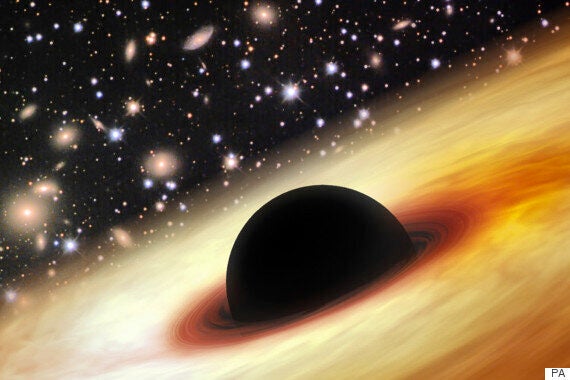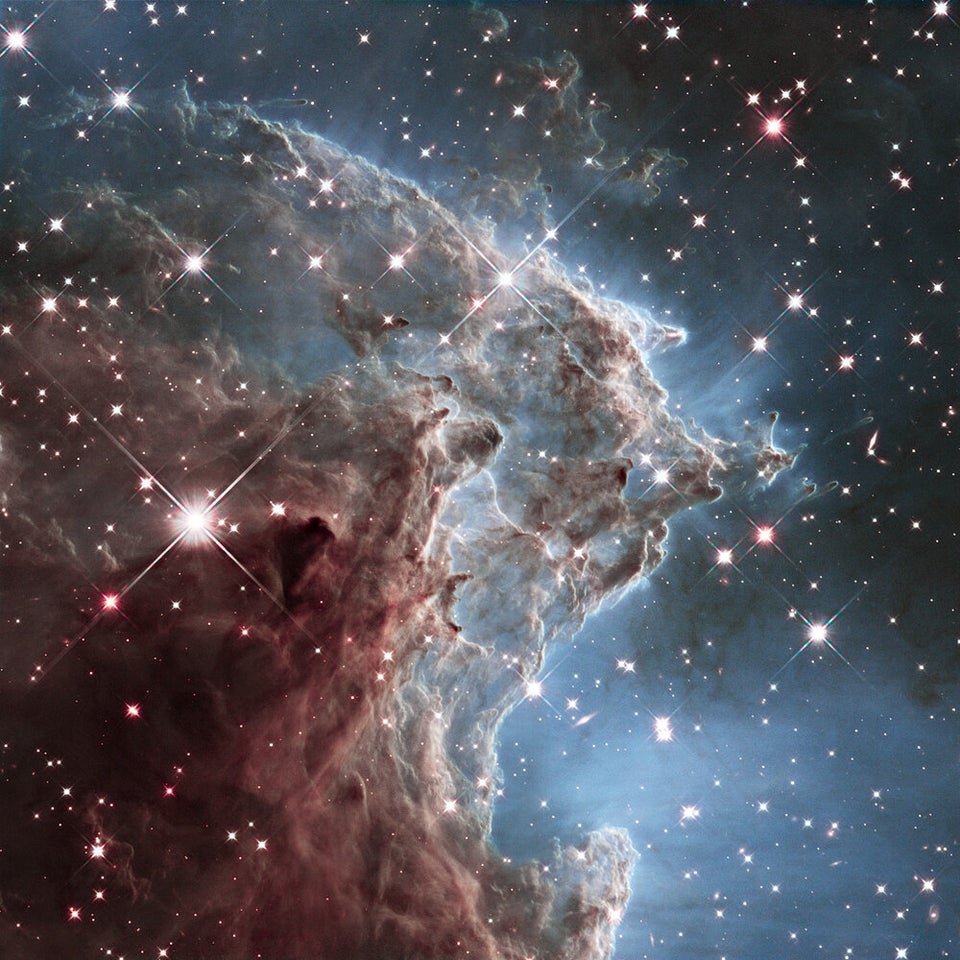A monster black hole powering "the brightest lighthouse in the distant universe" has been discovered that is 12 billion times more massive than the sun, scientists have revealed. The extraordinary object is at the centre of a quasar - an intensely powerful galactic radiation source - with a million billion times the sun's energy output.
For years the nature of quasars, discovered in 1963, remained a mystery. Today scientists believe they are generated by matter heating up as it is dragged into supermassive black holes at the centre of distant galaxies. The new object, named SDSS J0100+2802, is 12.8 billion light years from Earth and was formed just 900 million years after the Big Bang that gave birth to the universe.

Artist's impression of the black hole at the centre of the distant quasar
Astronomers cannot explain how such an enormous black hole could have formed so early in cosmic history, soon after the first stars and galaxies emerged.
Dr Fuyan Bian, from the Australian National University, a member of the international team, said: "Forming such a large black hole so quickly is hard to interpret with current theories... This black hole at the centre of the quasar gained enormous mass in a short period of time."
The quasar, the brightest ever detected in the early universe, was found after astronomers conducted a survey of distant luminous objects using data from several large telescopes around the world. It had a "redshift" - a measurement of the stretching of light to the red end of the spectrum by the expansion of the universe - of 6.30, marking it out as a very distant and old object. Only 40 known quasars have a redshift higher than six, the yardstick used to define the early universe boundary.
It was formed soon after the end of the "epoch of reionisation", a transformative era that ended the "cosmic dark age" following the Big Bang and created the star-filled universe we know today. Astronomers have uncovered more than 200,000 quasars dating as far back as 700 million years after the Big Bang. Despite their high luminosity they are extremely faint because of their great distance and difficult to find.
Professor Xue-Bing Wu, from Peking University in China, who led the study reported in the journal Nature, said: "This quasar is very unique. We are so excited, when we found that there is such a luminous and massive quasar only 0.9 billion years after the Big Bang. Just like the brightest lighthouse in the distant universe, its glowing light will help us to probe more about the early universe,."
US co-author Dr Yuri Beletsky, from the Carnegie Institution in Washington DC, said: "This quasar is a unique laboratory to study the way that a quasar's black hole and host galaxy co-evolve. Our findings indicate that in the early universe, quasar black holes probably grew faster than their host galaxies, although more research is needed to confirm this idea."
The quasar's black hole dwarfs the one at the centre of our galaxy, the Milky Way, which has mass of three million suns.
